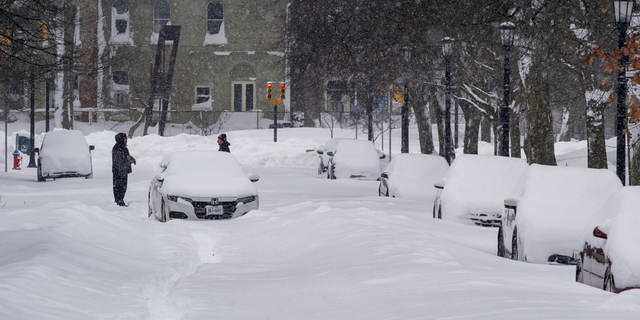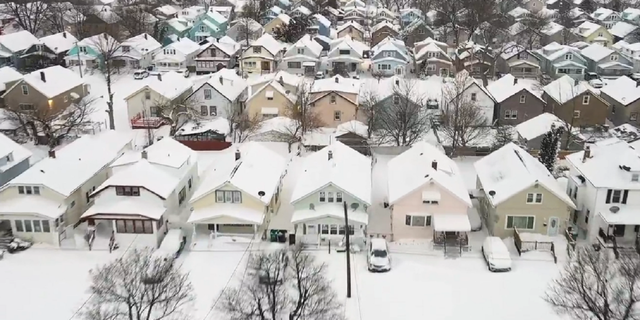A driving ban that shut down roads to the public across Buffalo for nearly a week has been lifted Thursday as recovery efforts are ongoing in the wake of a deadly Christmas weekend winter storm.
More than three dozen deaths have been reported in western New York from the blizzard that raged across much of the country, with Buffalo in its crosshairs on Friday and Saturday. The driving ban — which went into effect on Dec. 23 — has been replaced with a travel advisory, with Mayor Byron Brown urging locals not to drive if they didn’t have to.
“We are working around the clock to help Western New York recover from this historic winter storm, and we won’t stop until the job is done,” New York Gov. Kathy Hochul tweeted Wednesday night.
The National Guard is going door to door to check on people who lost power, and authorities faced the possibility of finding more victims as snow melted amid increasingly mild weather.
INCREDIBLE VIDEO, IMAGES SHOW FROZEN SCENES IN BUFFALO AND NIAGARA FALLS AFTER WINTER STORM
National Guard members check on residents on Wednesday, Dec. 28, in Buffalo, New York, following a winter storm.
(AP/Jeffrey T. Barnes)
Buffalo police and officers from other law enforcement agencies also searched for victims, sometimes using officers’ personal snowmobiles, trucks and other equipment.
BUFFALO AREA BRACING FOR POSSIBLE NEW THREAT: FLOODING FROM MELTING SNOW

An abandoned car rests on a street in the Elmwood Village neighborhood of Buffalo, New York, on Dec. 26.
(AP/Craig Ruttle)
With the death toll already surpassing that of the area’s notorious Blizzard of 1977, local officials faced questions about the response to last week’s storm. They insisted that they prepared but that the weather was extraordinary, even for a region prone to powerful winter storms.
“The city did everything that it could under historic blizzard conditions,” Brown said Wednesday.

Row after row of homes are seen buried in snow in Buffalo, New York, on Dec. 27.
(@Stacksthagod/WEATHER TRAKER/TMX )
Meanwhile, officials are watching a forecast that calls for some rain later in the week as snow melts in temperatures approaching or topping 50 degrees.
CLICK HERE TO GET THE FOX NEWS APP
“The combination of rain and snow melt may result in minor flooding on some of the Buffalo area creeks this weekend,” the National Weather Service says. “Snow melt will be gradual, but it still could result in ice jams, basement flooding, and ponding of water in urban areas.”
The Associated Press contributed to this report.